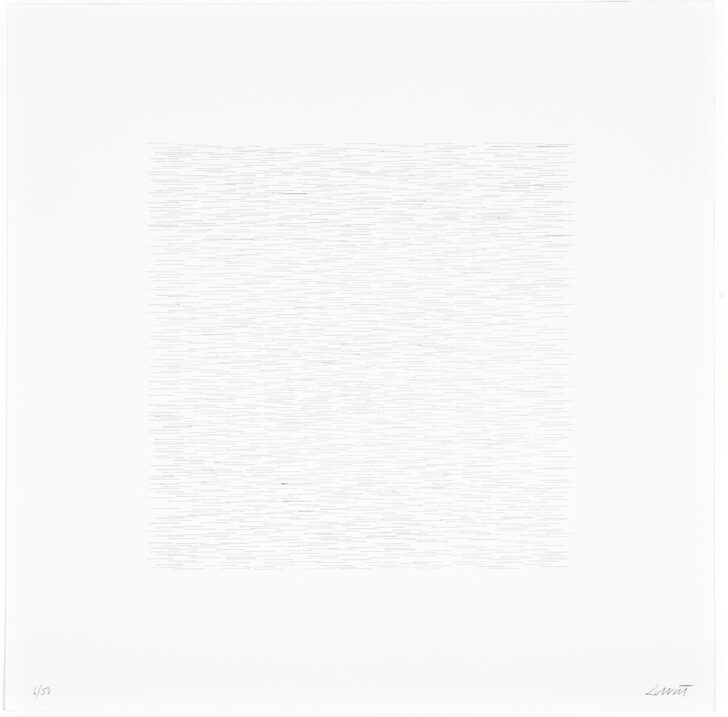Black, from “Sixteen Lithographs in Color”
Sol LeWitt

Description
March 28, 2009
“Serial components are multipartite pieces with regulated changes,” wrote LeWitt in 1966, and “the differences between the parts are the subject of the composition.” He began to explore seriality as a mode of composition in the mid-1960s, as he shifted from a sculptural practice associated with Minimalism into what has come to be known as conceptual art. For LeWitt, as for others at the time, seriality provided a means to eliminate the artist’s ego from his work because it resulted from a predetermined progression rather than a number of subjective—and ultimately arbitrary—decisions on the part of the artist. Serial compositions thus precluded traditional notions of expressivity. As LeWitt put it, “the idea becomes a machine that makes the art.” In this untitled suite of prints, as in nearly all of LeWitt’s work, the conceptual precepts that determine the composition are both visually evident and explained textually in the suite’s final component.
Usage Rights:
If you are interested in using an image for a publication, please visit https://umma.umich.edu/request-image/ for more information and to fill out the online Image Rights and Reproductions Request Form.